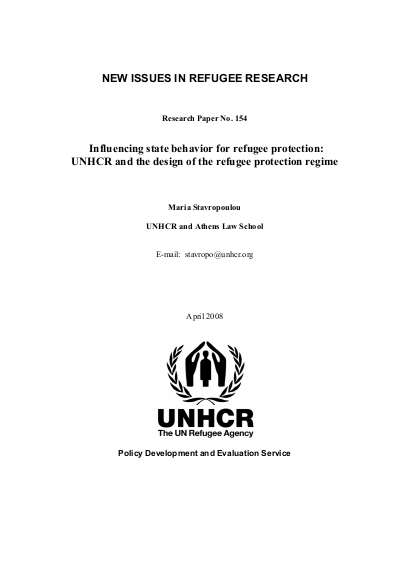
UNHCR is the guardian of the international refugee protection regime. In fulfilling this role, UNHCR is also the single most important actor in its constant development.1 This paper seeks to examine the way UNHCR designs and adapts the international refugee protection regime, and the extent to which this can be usefully informed by theories about how to influence state behavior, so as to ensure respect for the standards the regime promotes, in other words, international refugee protection standards. The paper is based on the assumption that throughout its history UNHCR has gained vast experience in what influences state behavior towards respect for and implementation of international refugee protection standards, and what, conversely, does not succeed in this goal. UNHCR, it must be said at the outset, sets its protection priorities taking at least intuitively into account how states will react to its advice, recommendations and standard setting processes.2 As any legal officer involved in the drafting of Executive Committee conclusions, for instance, will testify, an important feature of UNHCR’s regime design is whether UNHCR’s recommendations or standard setting efforts stand a chance of being adopted and being implemented in practice.3 The question this paper raises is whether UNHCR’s involvement in designing the international refugee protection regime is adequately informed by regime design and compliance theories. Put simply, the question is whether UNHCR works in this area not only on the basis of intuition and empirical claims as to what influences the states it works with, but also on the basis of critically analysing its vast experience, taking note of the findings and feeding them into the ways it works with states to ensure respect for refugee protection. I am not an expert in international relations theory4 or regime theory, yet I am increasingly intrigued by academic discussions in this area, especially as they relate to international human rights regime design.5 For the purposes of this paper, it is a given that the standards promoted by UNHCR enjoy the highest legal and moral authority. Hence, the paper is not about the standards themselves. Nor does this paper seek to delve into international regime theories or provide a comprehensive description of how UNHCR goes about designing the refugee protection regime. It aims to stimulate discussion as to whether we think sufficiently strategically and systemically about how we operate in the area of influencing state behavior , and whether we need to adopt additional or different strategies.